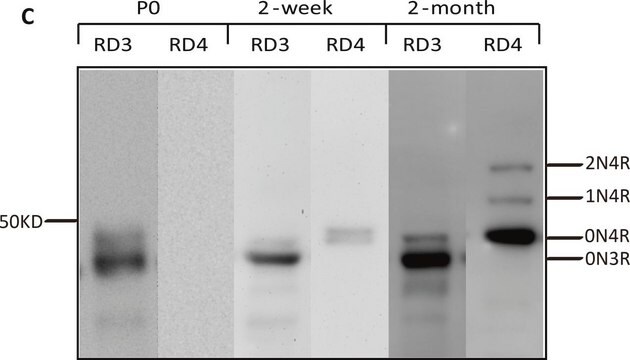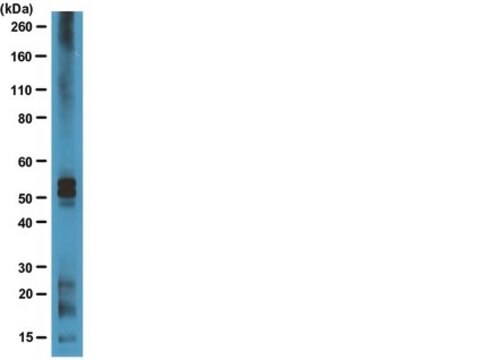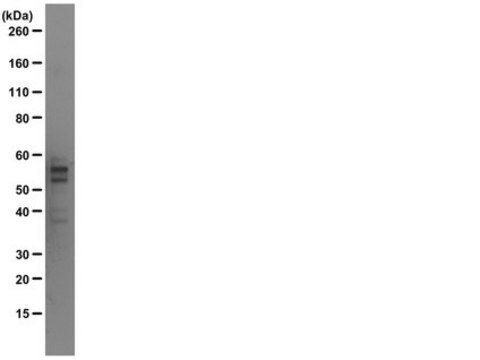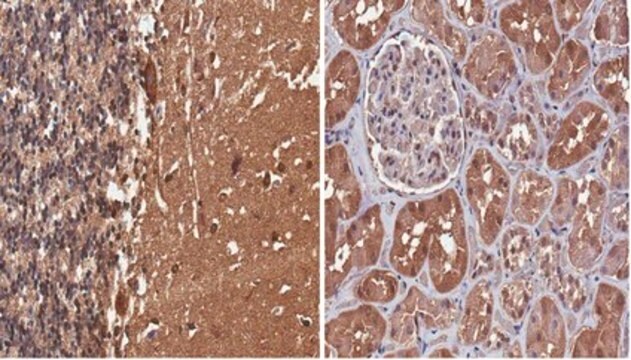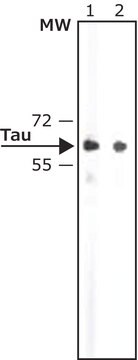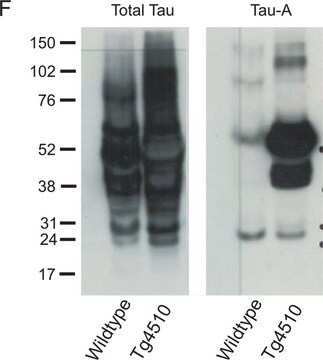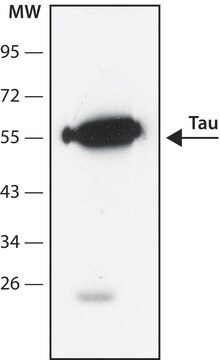05-803
Anti-Tau (3-repeat isoform RD3) Antibody, clone 8E6/C11
culture supernatant, clone 8E6/C11, Upstate®
Synonym(s):
G protein beta1/gamma2 subunit-interacting factor 1, Neurofibrillary tangle protein, Paired helical filament-tau, microtubule-associated protein tau, microtubule-associated protein tau, isoform 4.
About This Item
Recommended Products
biological source
mouse
Quality Level
antibody form
culture supernatant
antibody product type
primary antibodies
clone
8E6/C11, monoclonal
species reactivity
human
manufacturer/tradename
Upstate®
technique(s)
immunohistochemistry: suitable
western blot: suitable
isotype
IgG
NCBI accession no.
UniProt accession no.
shipped in
wet ice
target post-translational modification
unmodified
Gene Information
human ... MAPT(4137)
General description
Specificity
Immunogen
Application
This antibody has been reported by an independent laboratory to detect Tau (3-repeat isoform RD3) in autoclaved paraffin brain sections (de Silva, R., 2003).
Differential Detection of Tauopathies:
(Togo, T., 2002.)
Neuroscience
Neurotransmitters & Receptors
Neurodegenerative Diseases
Quality
Western Blot Analysis:
A 1:1000-1:4000 dilution of this lot detected Tau (3-repeat isoform RD3) in lysates from rat brain cytosol fraction.
Target description
Physical form
Storage and Stability
For maximum recovery of product, centrifuge the vial prior to removing the cap.
Handling Recommendations:
Upon first thaw, and prior to removing the cap, centrifuge the vial and gently mix the solution. Aliquot into microcentrifuge tubes and store at -20°C. Avoid repeated freeze/thaw cycles, which may damage IgG and affect product performance. Note: Variabillity in freezer temperatures below -20°C may cause glycerol containing solutions to become frozen during storage.
Analysis Note
Lysates from rat brain cytosol fraction.
Other Notes
Legal Information
Disclaimer
Not finding the right product?
Try our Product Selector Tool.
Storage Class Code
10 - Combustible liquids
WGK
WGK 2
Flash Point(F)
Not applicable
Flash Point(C)
Not applicable
Certificates of Analysis (COA)
Search for Certificates of Analysis (COA) by entering the products Lot/Batch Number. Lot and Batch Numbers can be found on a product’s label following the words ‘Lot’ or ‘Batch’.
Already Own This Product?
Find documentation for the products that you have recently purchased in the Document Library.
Our team of scientists has experience in all areas of research including Life Science, Material Science, Chemical Synthesis, Chromatography, Analytical and many others.
Contact Technical Service